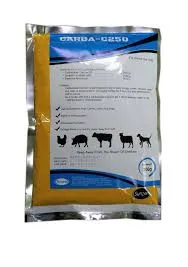- Afrikaans
- Albanian
- Amharic
- Arabic
- Armenian
- Azerbaijani
- Basque
- Belarusian
- Bengali
- Bosnian
- Bulgarian
- Catalan
- Cebuano
- Corsican
- Croatian
- Czech
- Danish
- Dutch
- English
- Esperanto
- Estonian
- Finnish
- French
- Frisian
- Galician
- Georgian
- German
- Greek
- Gujarati
- Haitian Creole
- hausa
- hawaiian
- Hebrew
- Hindi
- Miao
- Hungarian
- Icelandic
- igbo
- Indonesian
- irish
- Italian
- Japanese
- Javanese
- Kannada
- kazakh
- Khmer
- Rwandese
- Korean
- Kurdish
- Kyrgyz
- Lao
- Latin
- Latvian
- Lithuanian
- Luxembourgish
- Macedonian
- Malgashi
- Malay
- Malayalam
- Maltese
- Maori
- Marathi
- Mongolian
- Myanmar
- Nepali
- Norwegian
- Norwegian
- Occitan
- Pashto
- Persian
- Polish
- Portuguese
- Punjabi
- Romanian
- Russian
- Samoan
- Scottish Gaelic
- Serbian
- Sesotho
- Shona
- Sindhi
- Sinhala
- Slovak
- Slovenian
- Somali
- Spanish
- Sundanese
- Swahili
- Swedish
- Tagalog
- Tajik
- Tamil
- Tatar
- Telugu
- Thai
- Turkish
- Turkmen
- Ukrainian
- Urdu
- Uighur
- Uzbek
- Vietnamese
- Welsh
- Bantu
- Yiddish
- Yoruba
- Zulu
Nov . 05, 2024 18:37 Back to list
oxyclozanide and levamisole bolus
The Role of Oxyclozanide and Levamisole Bolus in Veterinary Medicine
Introduction
In the field of veterinary medicine, the management of parasitic infections is a critical aspect of ensuring the health and productivity of livestock. Among various antiparasitic agents, Oxyclozanide and Levamisole have been studied for their efficacy and are often used in combination to enhance treatment outcomes. This article delves into the importance of Oxyclozanide and Levamisole bolus, exploring their mechanisms of action, applications, dosage, and potential side effects.
Mechanism of Action
Oxyclozanide is a member of the salicylanilide class of compounds, primarily effective against trematodes (flatworms) and certain nematodes (roundworms). It works by disrupting the energy metabolism of the parasites, ultimately leading to their death. Oxyclozanide is particularly well-known for its action against liver flukes, which can cause significant economic losses in ruminant livestock through liver damage and associated complications.
On the other hand, Levamisole is an anthelmintic that belongs to the imidazothiazole group. Its primary mechanism involves stimulating the host's immune response while simultaneously paralyzing the gastrointestinal parasites. Levamisole has a broad spectrum of activity against nematodes, making it an essential drug in the treatment of gastrointestinal parasitism.
When administered together in bolus form, Oxyclozanide and Levamisole offer a synergistic effect that can tackle multiple parasitic infections, thus providing a more comprehensive treatment solution for livestock
.Applications
The combined use of Oxyclozanide and Levamisole bolus is especially beneficial in ruminant livestock, such as cattle, sheep, and goats. These animals are often affected by a range of internal parasites, which lead to reduced growth rates, poor feed conversion, and decreased reproductive performance. The bolus form allows for easier administration and ensures that the medication is released gradually, maintaining effective drug levels in the bloodstream over an extended period.
oxyclozanide and levamisole bolus

This combination treatment is particularly advantageous in regions where livestock are at a high risk of parasitic infections due to environmental factors, such as high humidity and poor sanitation. Effective parasite control contributes significantly to the overall health of the animals and the productivity of the farming operations.
Dosage and Administration
The recommended dosage of Oxyclozanide and Levamisole bolus varies depending on the animal's weight and specific parasitic burden. Veterinary professionals typically calculate the appropriate amount based on body weight and the severity of infection. It is crucial to follow the guidelines provided by manufacturers and to consider any local regulations regarding the use of veterinary drugs.
Proper administration techniques are also essential to ensure efficacy and minimize discomfort. The bolus should ideally be administered orally, using a drenching device that reduces the risk of aspiration. Care must be taken to avoid any unnecessary stress to the animal during this process.
Side Effects and Considerations
While Oxyclozanide and Levamisole bolus is generally considered safe when administered correctly, some side effects might occur. Animals may exhibit mild gastrointestinal disturbances, such as diarrhea or vomiting. In rare cases, an allergic reaction may occur, necessitating immediate veterinary attention.
Moreover, it is essential to consider the potential for developing resistance to these anthelmintics, particularly with overuse. Farmers and veterinarians should adopt an integrated approach to parasite management, combining chemical treatments with good husbandry practices and rotational grazing strategies to mitigate the risk of resistance.
Conclusion
The use of Oxyclozanide and Levamisole bolus plays a vital role in the management of parasitic infections in livestock. Its dual-action mechanism provides an effective solution to combat a variety of parasites, enhancing the health and productivity of affected animals. By adhering to proper administration protocols and monitoring for side effects, farmers can ensure optimal outcomes. Continued research into the efficacy and resistance patterns of these drugs will be essential for maintaining their effectiveness in veterinary medicine. Thus, the combined use of Oxyclozanide and Levamisole can significantly contribute to sustainable livestock production practices.
-
Guide to Oxytetracycline Injection
NewsMar.27,2025
-
Guide to Colistin Sulphate
NewsMar.27,2025
-
Gentamicin Sulfate: Uses, Price, And Key Information
NewsMar.27,2025
-
Enrofloxacin Injection: Uses, Price, And Supplier Information
NewsMar.27,2025
-
Dexamethasone Sodium Phosphate Injection: Uses, Price, And Key Information
NewsMar.27,2025
-
Albendazole Tablet: Uses, Dosage, Cost, And Key Information
NewsMar.27,2025













